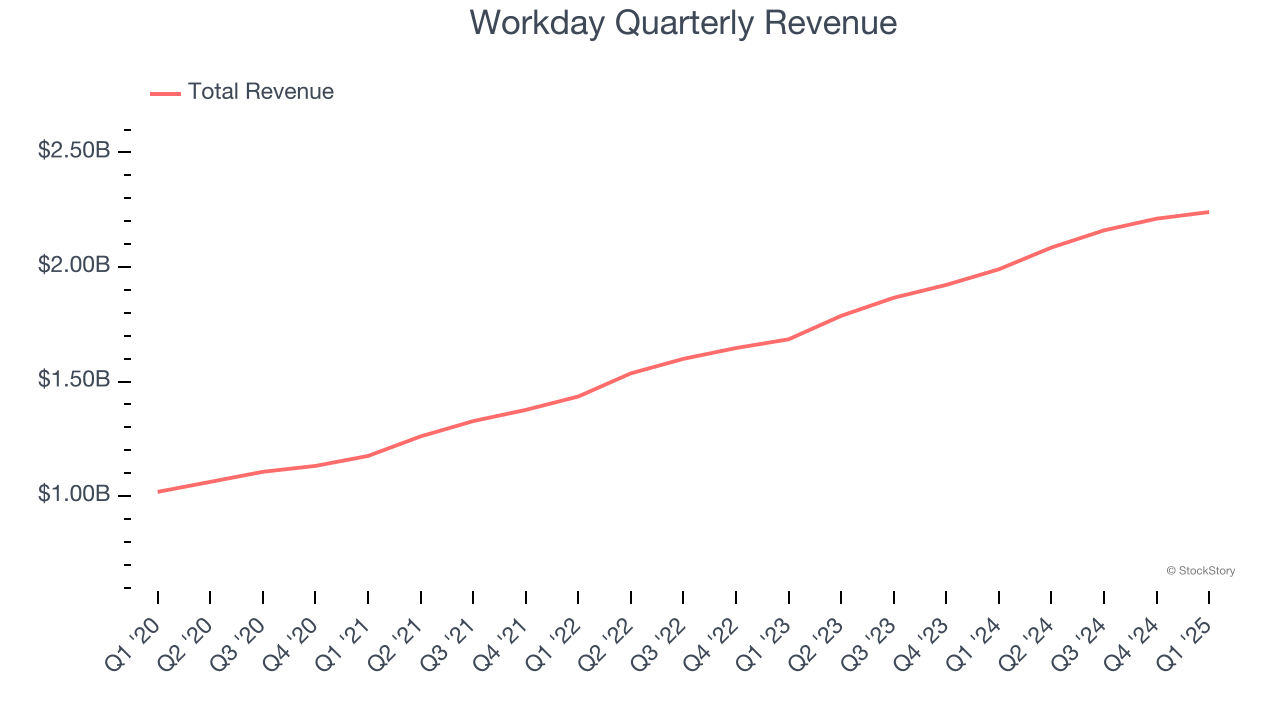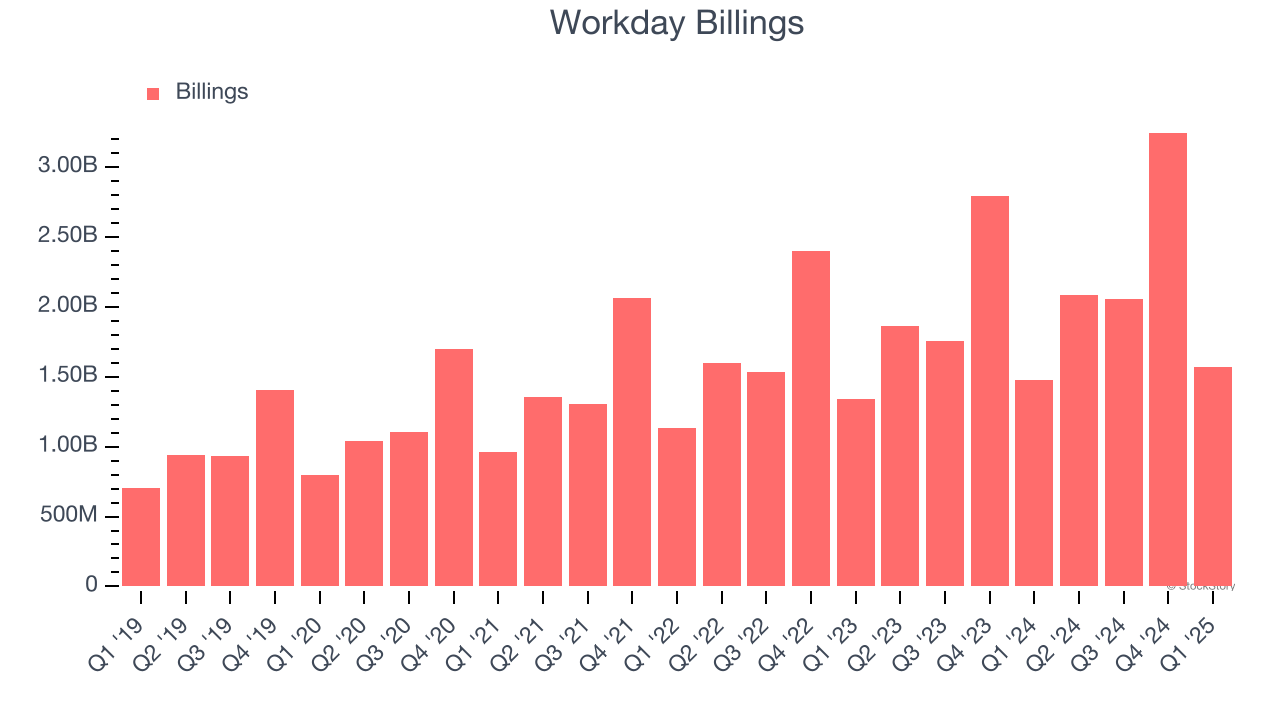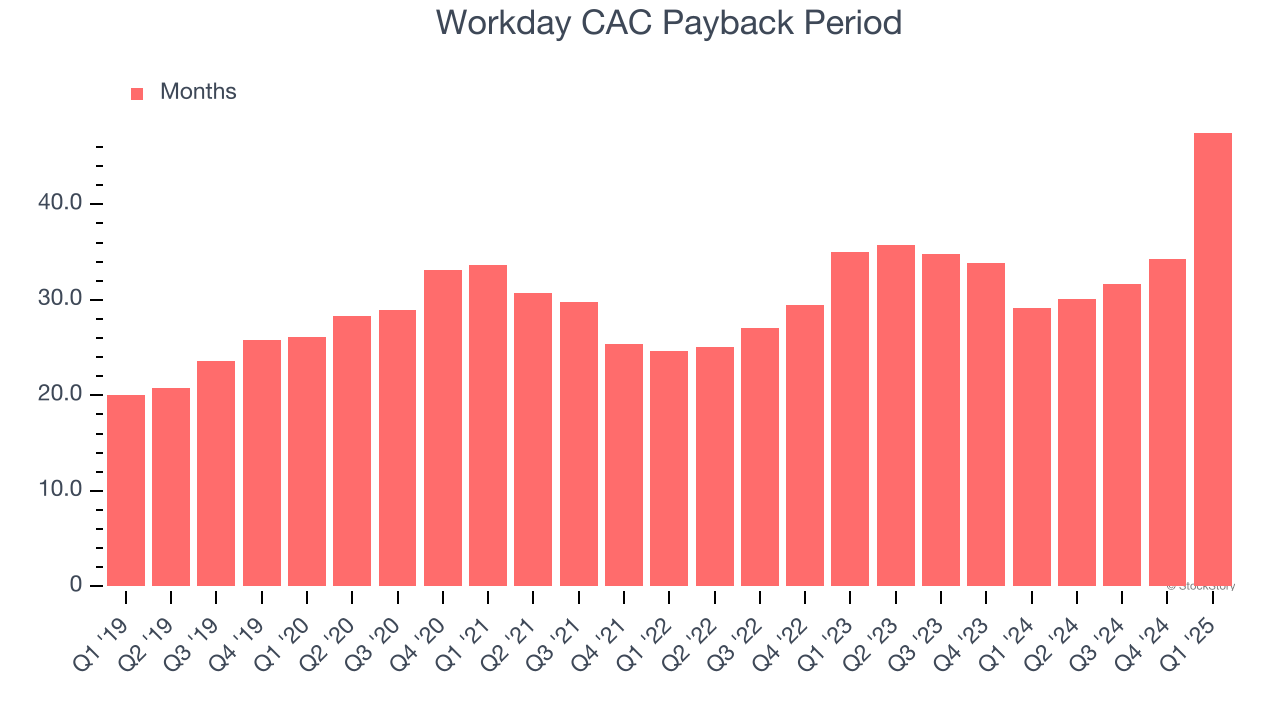
Finance and HR software company Workday (NASDAQ: WDAY) reported Q1 CY2025 results topping the market’s revenue expectations, with sales up 12.6% year on year to $2.24 billion. Its non-GAAP profit of $2.23 per share was 11% above analysts’ consensus estimates.
Is now the time to buy Workday? Find out by accessing our full research report, it’s free.
Workday (WDAY) Q1 CY2025 Highlights:
- Revenue: $2.24 billion vs analyst estimates of $2.22 billion (12.6% year-on-year growth, 1% beat)
- Adjusted EPS: $2.23 vs analyst estimates of $2.01 (11% beat)
- Adjusted Operating Income: $677 million vs analyst estimates of $621.7 million (30.2% margin, 8.9% beat)
- Q2 guidance for subscription revenue beats expectations, but full-year subscription revenue guidance in line
- Operating Margin: 1.7%, down from 3.2% in the same quarter last year
- Free Cash Flow Margin: 18.8%, down from 46.4% in the previous quarter
- Billings: $1.57 billion at quarter end, up 6.4% year on year
- Market Capitalization: $71.83 billion
"Workday delivered another solid quarter, a testament to the durability of our business and the relevance of our platform as CEOs increasingly turn to us to drive efficiency, agility, and growth," said Carl Eschenbach, CEO, Workday.
Company Overview
Founded by industry veterans Aneel Bushri and Dave Duffield after their former company PeopleSoft was acquired by Oracle in a hostile takeover, Workday (NASDAQ: WDAY) provides cloud-based software for organizations to manage and plan finance and human resources.
Sales Growth
A company’s long-term sales performance is one signal of its overall quality. Any business can experience short-term success, but top-performing ones enjoy sustained growth for years. Over the last three years, Workday grew its sales at a 17.2% compounded annual growth rate. Although this growth is acceptable on an absolute basis, it fell slightly short of our standards for the software sector, which enjoys a number of secular tailwinds.

This quarter, Workday reported year-on-year revenue growth of 12.6%, and its $2.24 billion of revenue exceeded Wall Street’s estimates by 1%.
Looking ahead, sell-side analysts expect revenue to grow 12.8% over the next 12 months, a deceleration versus the last three years. Despite the slowdown, this projection is above the sector average and suggests the market sees some success for its newer products and services.
Unless you’ve been living under a rock, it should be obvious by now that generative AI is going to have a huge impact on how large corporations do business. While Nvidia and AMD are trading close to all-time highs, we prefer a lesser-known (but still profitable) stock benefiting from the rise of AI. Click here to access our free report one of our favorites growth stories.
Billings
Billings is a non-GAAP metric that is often called “cash revenue” because it shows how much money the company has collected from customers in a certain period. This is different from revenue, which must be recognized in pieces over the length of a contract.
Workday’s billings punched in at $1.57 billion in Q1, and over the last four quarters, its growth slightly outpaced the sector as it averaged 12.9% year-on-year increases. This alternate topline metric grew slower than total sales, meaning the company recognizes revenue faster than it collects cash - a headwind for its liquidity that could also signal a slowdown in future revenue growth. 
Customer Acquisition Efficiency
The customer acquisition cost (CAC) payback period represents the months required to recover the cost of acquiring a new customer. Essentially, it’s the break-even point for sales and marketing investments. A shorter CAC payback period is ideal, as it implies better returns on investment and business scalability.
Workday does a decent job acquiring new customers, and its CAC payback period checked in at 47.5 months this quarter. The company’s relatively fast recovery of its customer acquisition costs gives it the option to accelerate growth by increasing its sales and marketing investments. 
Key Takeaways from Workday’s Q1 Results
It was good to see Workday narrowly top analysts’ revenue expectations this quarter. Looking ahead, Q2 subscription revenue guidance was ahead of Wall Street Consensus, but full-year subscription revenue guidance was roughly in line. Additionally, its billings missed. Overall, this was a mixed quarter. The stock traded down 3.2% to $263.44 immediately after reporting.
Workday underperformed this quarter, but does that create an opportunity to invest right now? We think that the latest quarter is only one piece of the longer-term business quality puzzle. Quality, when combined with valuation, can help determine if the stock is a buy. We cover that in our actionable full research report which you can read here, it’s free.

